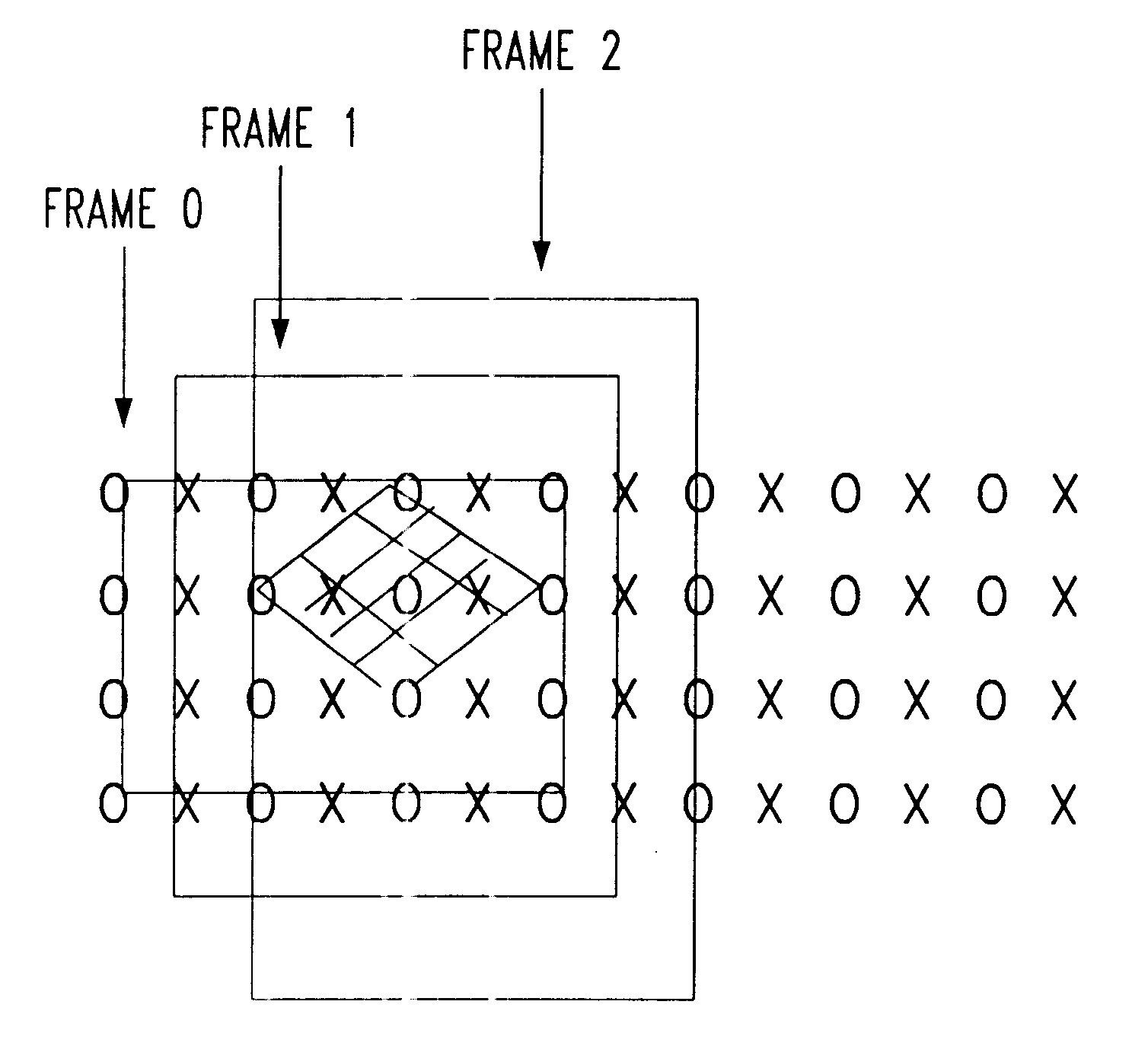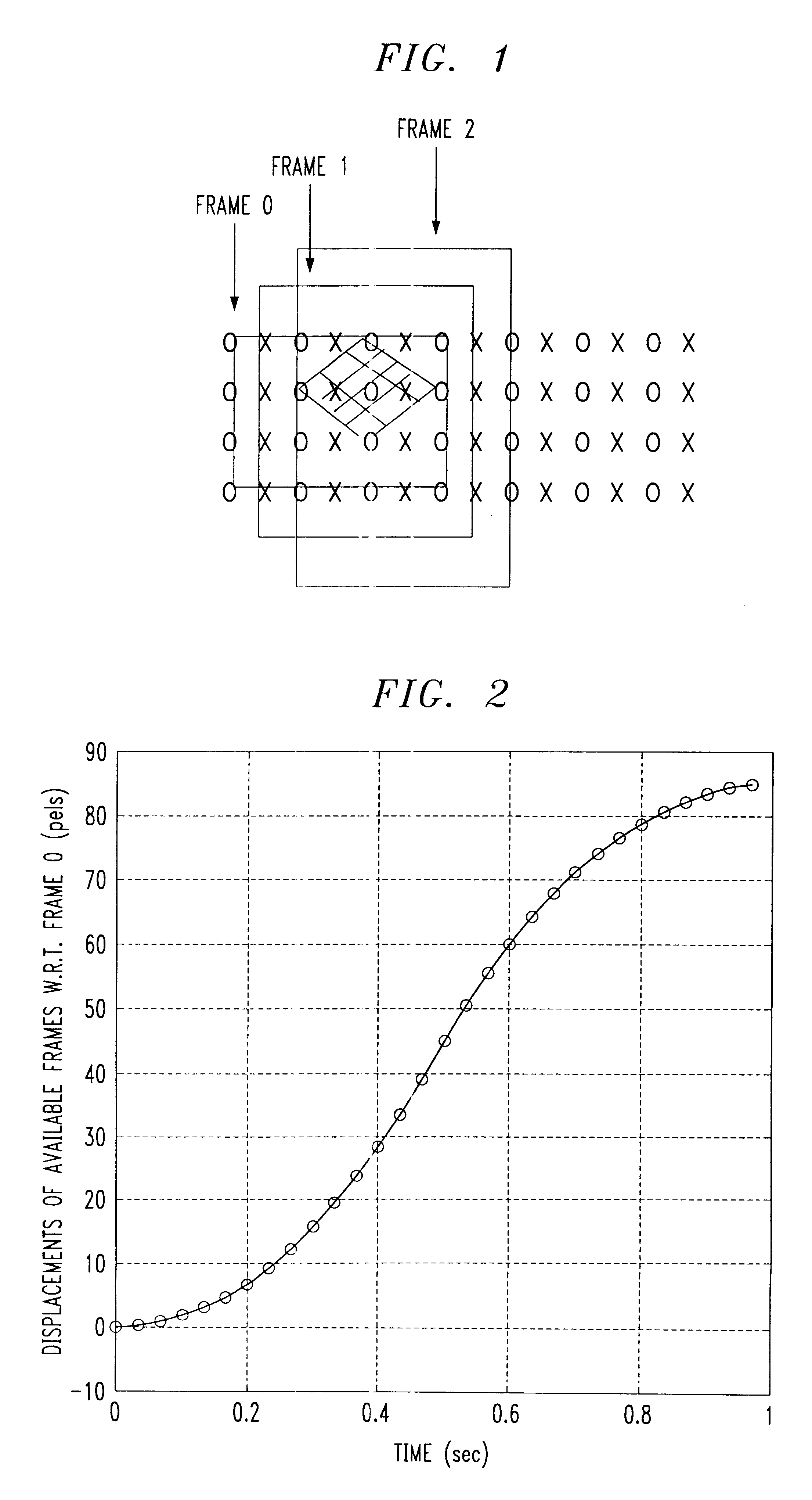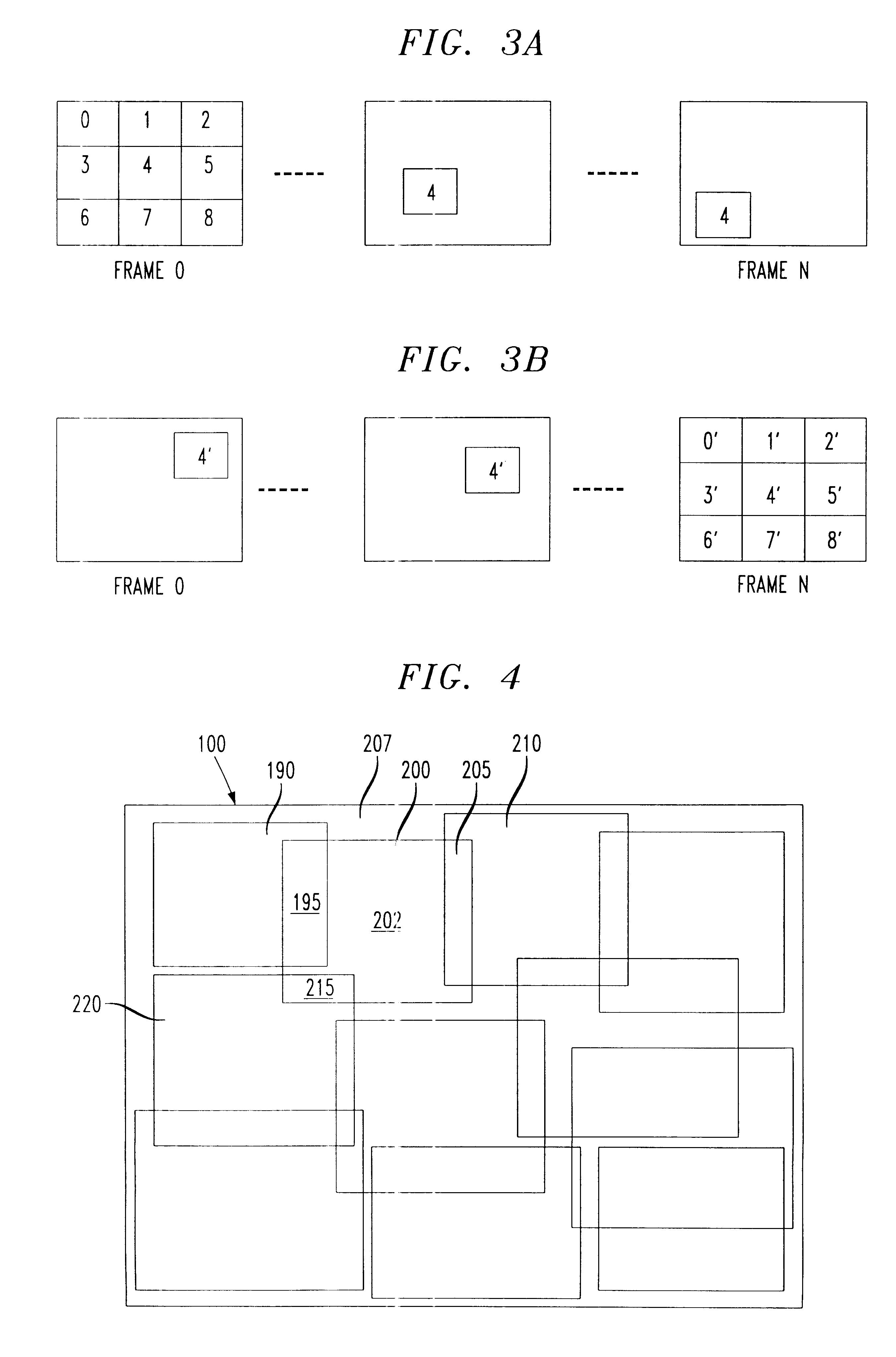Motion compensation image interpolation-frame rate conversion for HDTV
a motion compensation and image interpolation technology, applied in the field of source video signal processing, can solve the problems of affecting the conversion speed unable to achieve the reconstruction of continuous spatio-temporal signals, and known techniques such as frame repetition or linear interpolation cannot suffice for conversion of data having high spatial resolution
- Summary
- Abstract
- Description
- Claims
- Application Information
AI Technical Summary
Problems solved by technology
Method used
Image
Examples
Embodiment Construction
The inventive technique utilizes motion information in conjunction with information about sampling grids of digitized available frames from an existing low frame rate video signal (e.g. a 24 Hz signal) to generate a higher rate signal (e.g., 60 Hz or 72 Hz) for use with high definition television (HDTV), or other such applications. The inventive technique will, by way of illustrative example, first be described for converting a video signal representing a panning of a static scene, and will then be described for converting a video signal containing moving objects within a scene.
Static Scene
Given a 24 / 30 Hz digitized video frame sequence, missing additional frames must be created to generate high quality 60 Hz source material for HDTV. Thus, the basic problem is to perform a frame rate up-conversion from 24 / 30 to 60 Hz. However, perfect reconstruction of the continuous spatio-temporal signal is not always possible using a motion-compensated reconstruction filter as is known in the ar...
PUM
 Login to View More
Login to View More Abstract
Description
Claims
Application Information
 Login to View More
Login to View More - R&D
- Intellectual Property
- Life Sciences
- Materials
- Tech Scout
- Unparalleled Data Quality
- Higher Quality Content
- 60% Fewer Hallucinations
Browse by: Latest US Patents, China's latest patents, Technical Efficacy Thesaurus, Application Domain, Technology Topic, Popular Technical Reports.
© 2025 PatSnap. All rights reserved.Legal|Privacy policy|Modern Slavery Act Transparency Statement|Sitemap|About US| Contact US: help@patsnap.com



